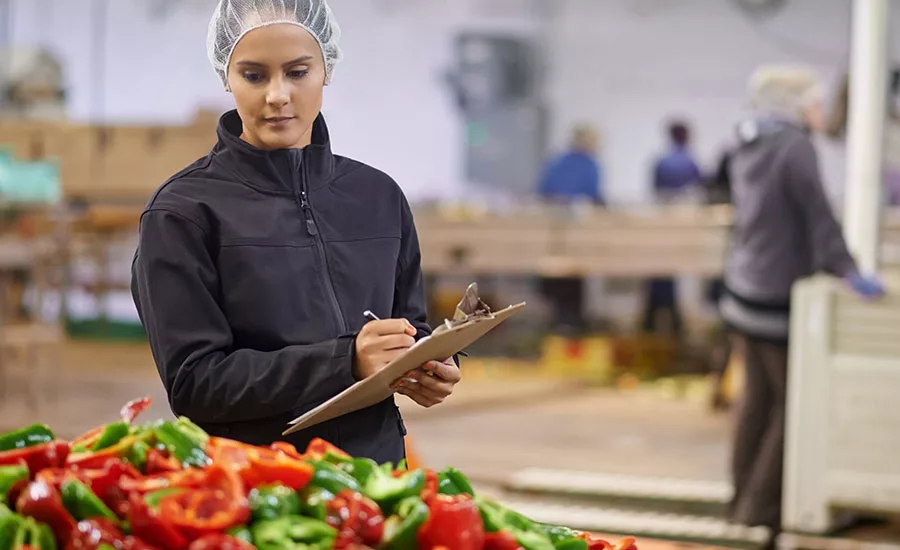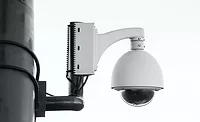How Surveillance Enables Better Food Processing Safety & Compliance

When we contemplate where our food is made, cleanliness and hygiene are typically at the top of the list of necessities. And when it comes to production facilities, strict regulations and sanitation requirements are in place to ensure that the highest levels of food safety are met. But constant changes to production practices and unregulated systems for proper training on food handling are just a few of the many difficulties that drive the necessity for stronger internal processes and diversified technology systems such as video surveillance.
Research has shown that there has been an evolution in the type of foods we eat; shifting demographics have led to shifting tastes and ingredients, and food and beverage processors are adjusting to new diets with a more varied production. There is now a greater demand for higher quality, “premium” foods, and this includes a focus on foodborne illness prevention. According to the World Health Organization (WHO), there are more than 200 diseases that are spread through food; one in 10 people fall ill every year from eating contaminated food; and more than 420,000 people die as a result. The WHO also reports that there are a number of ways foods can become contaminated, since the food supply chain is very complex and “involves a range of different stages, including on-farm production, slaughtering or harvesting; processing; storage; transport; and distribution before the food reaches consumers.”
While education and training in safe food handling are the cornerstones of food safety, challenges still exist for food manufacturers and producers because globalization and trade make the food chain longer and bring new aspects to disease outbreak investigations and recalls. There is also the need to cooperate with governmental authorities, such as the U.S. Food and Drug Administration, to investigate foodborne illness outbreaks and determine how the outbreak occurred. Food production facilities face the complex process of providing information to these bodies to aid these investigations.
In order for production facilities to meet constant demands, it has become increasingly important for video surveillance to be in place for evidentiary purposes. From processes on the farm to practices in the kitchen, food processors and manufacturers are at a point in which video capture technologies, such as IP video surveillance cameras and deep learning (think video analytics), can play an important role in monitoring activities and ensuring compliance. Video surveillance is a powerful tool that can not only augment facility security efforts, but also be leveraged for uses far beyond forensic purposes.
Video surveillance technology can be used for monitoring production line staff and day-to-day operations; pinpointing cross-contamination issues or potential hazards; identifying instances of breaches in compliance in slaughtering or harvesting; investigating accidents on the job or incidents of theft or tampering; and training new employees on correct procedures. The possibilities for video's use are endless.
Surveillance and Slaughterhouses
As footage has been released of contractors and workers severely abusing animals, such as the instances at a major food company in the U.S. and 12 U.K. slaughterhouses, the campaign has become stronger from activists around the world demanding independently monitored video cameras inside these facilities. The Say Yes to Slaughterhouse CCTV campaign began its work in 2009, advocating for the use of video to monitor animal cruelty and adherence to welfare laws.
And legal progress has been made: Environment Secretary Michael Gove unveiled plans in August 2017 that will require all slaughterhouses in England to be fitted with compulsory video surveillance technology. The government will also present a series of additional measures to bolster welfare standards and enforce the proper treatment of these animals.
The use of panoramic surveillance technology is highly beneficial in these cases, as a comprehensive picture is required to ensure that no questionable action is taking place. The placement of surveillance cameras in slaughterhouses could be complicated, but replacing multiple traditional cameras with fewer 360-degree cameras guarantees comprehensive views of the facilities. This type of surveillance could also be implemented in animal transport vehicles, ensuring that the entire journey from loading to offloading is safe and free of inhumane treatment.
Food safety and animal welfare are of utmost importance, so the ability to monitor and audit the entire process is paramount to an institution's success. At its core, implementing a video surveillance solution can allow these facilities to achieve new levels of situational awareness to help address incidents, track actions and streamline operations.
Looking for a reprint of this article?
From high-res PDFs to custom plaques, order your copy today!







